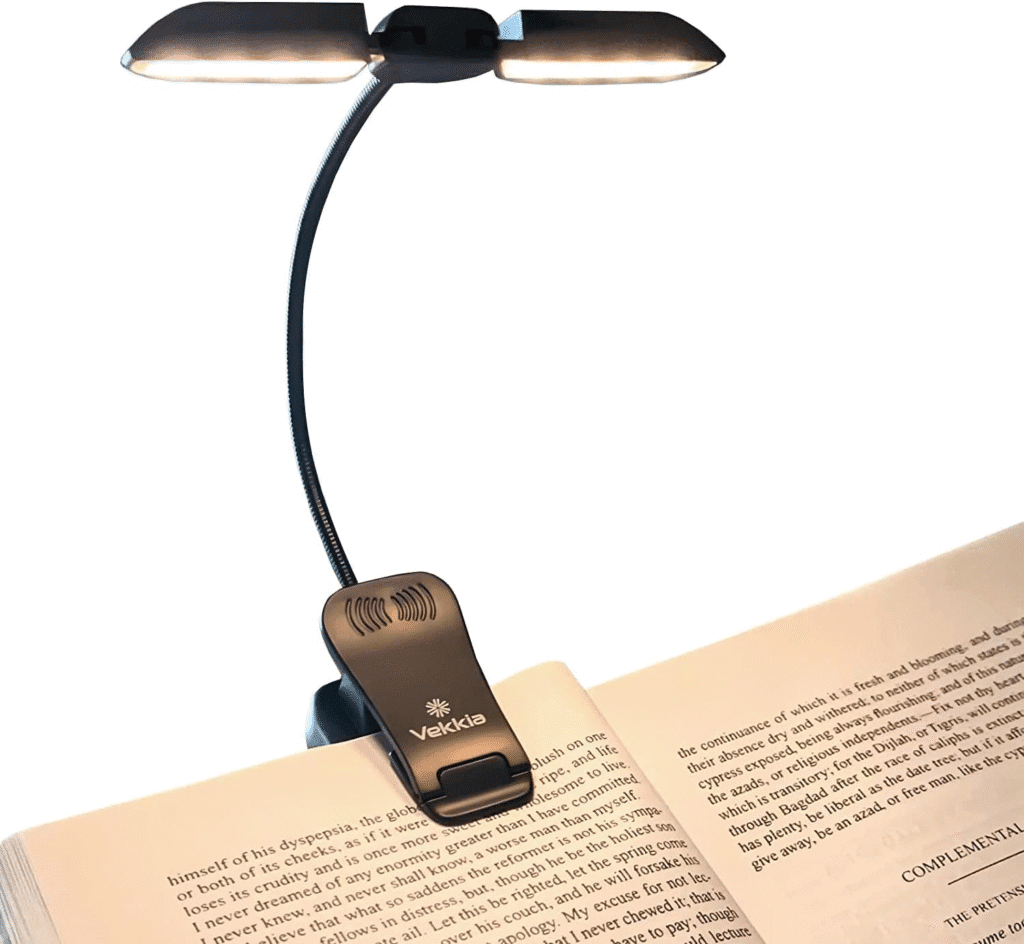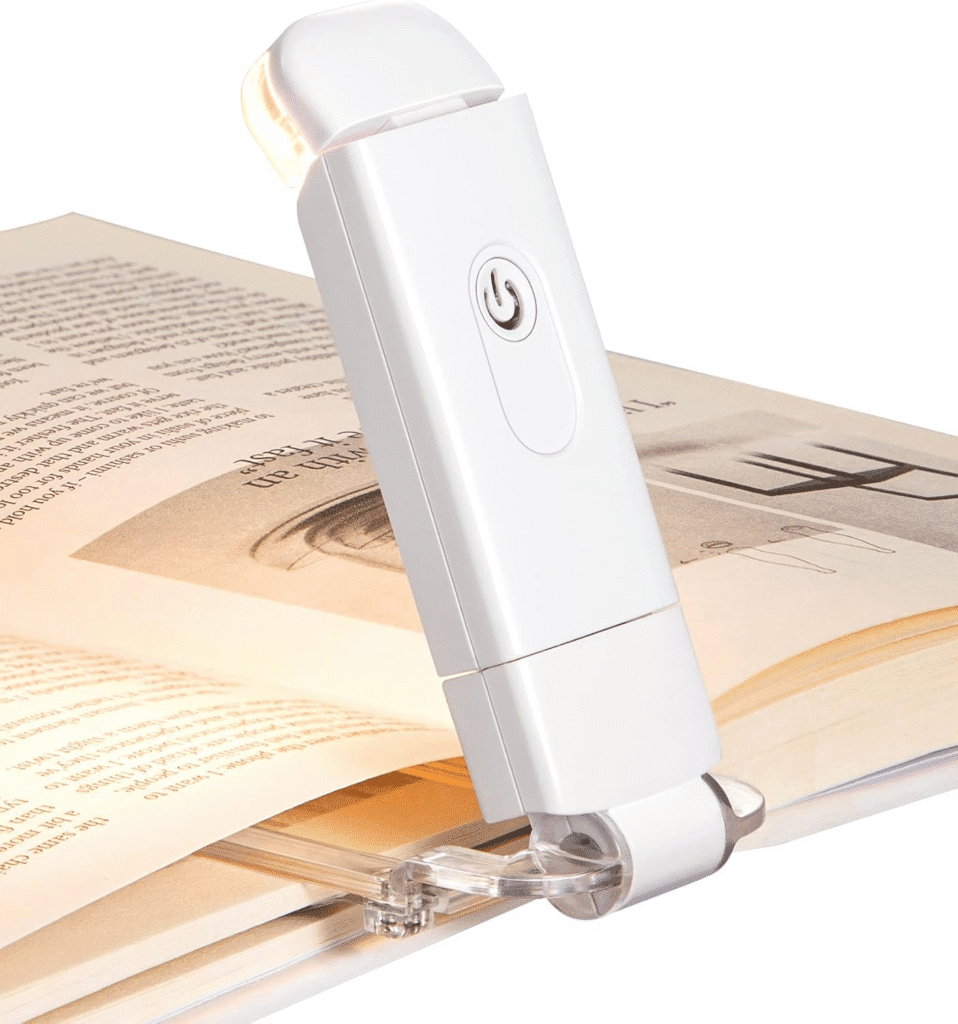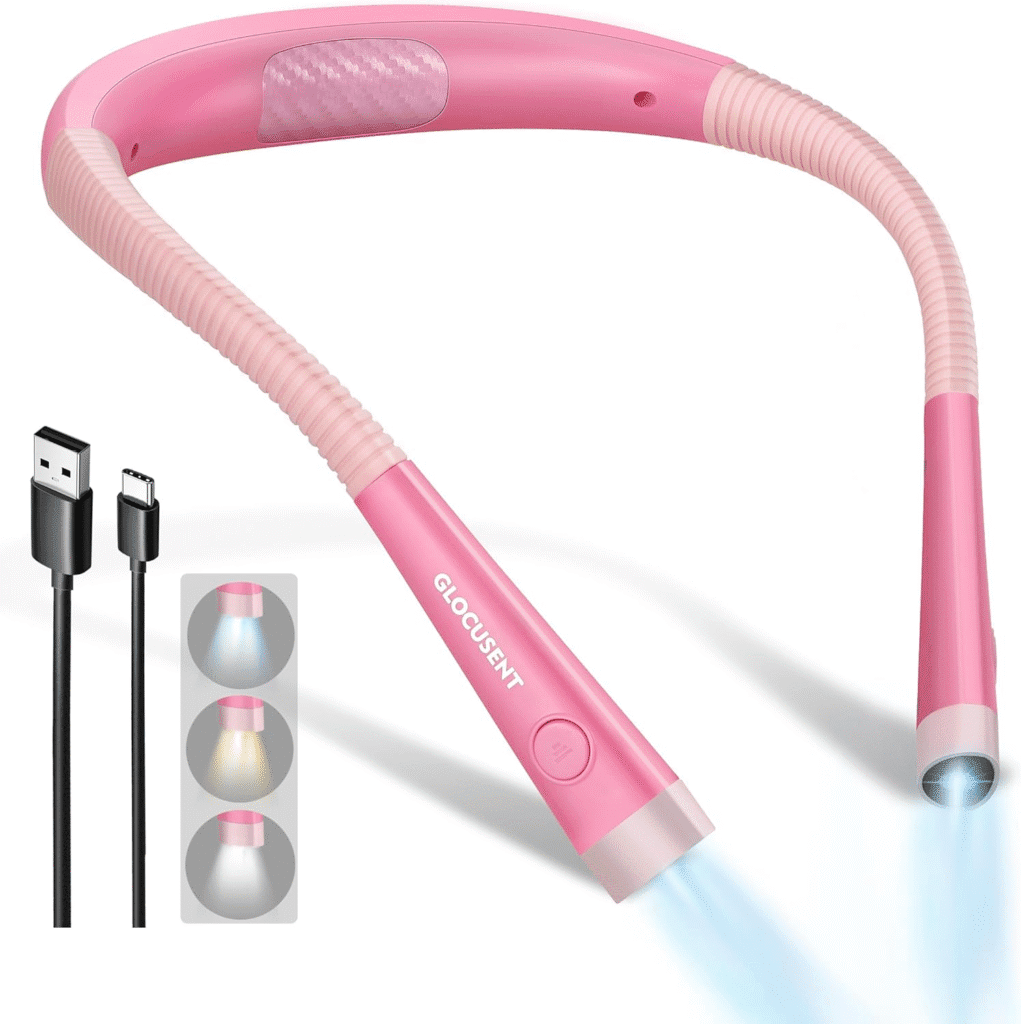Are you an avid reader? Do you often find yourself immersed in the world of books, losing track of time? If so, then you know how important it is to have proper lighting while reading. In this blog, we will delve into the impact of lighting on reading and why it is crucial for your eye health. We will discuss how poor lighting can result in eye strain and the signs to look out for.
We will explore the role of proper lighting in preventing eye strain and provide tips on what types of light should be avoided while reading. Furthermore, we will guide you on choosing the best reading lamp and desk lamp for an enhanced reading experience. So, grab your favorite book and let’s shed some light on the importance of proper lighting while reading!
Best bought Reading Lights in past month
Best Reading Lights, Runner-Up, Wearable Reading Light
Understanding the Impact of Lighting on Reading
Proper lighting plays a significant role in the reading experience. It helps reduce eye strain and fatigue, making reading more comfortable. Good lighting also improves focus and concentration, leading to better comprehension and retention of information. The type of lighting used, such as natural light or LED bulbs, can affect reading performance. It is important to have adjustable lighting to accommodate different reading materials and preferences. Creating a well-lit reading environment enhances the overall reading experience and enjoyment.
How Poor Lighting Can Result in Eye Strain?
Insufficient lighting strains the eyes as they work harder to focus. Squinting and glare make reading uncomfortable, leading to eye fatigue and headaches.
Identifying the Signs of Eye Strain
Eye strain can manifest through various symptoms like headaches, blurred vision, and dry or irritated eyes. When reading, poor lighting can exacerbate eye strain. However, proper lighting can significantly reduce eye strain and enhance reading comfort. While natural light is the most ideal option, adjustable lamps and task lighting can also be beneficial. To further alleviate eye strain, taking regular breaks and maintaining proper posture is recommended. Keeping these factors in mind ensures optimal illumination for a comfortable reading experience.
The Role of Proper Lighting in Preventing Eye Strain
Insufficient lighting while reading can result in eye strain and discomfort. To prevent this, it is crucial to have proper lighting that improves focus and concentration. Natural light is the best option, but if not available, bright and evenly distributed artificial lighting can be used. It is important to avoid glare by positioning lights correctly and using anti-glare screens or filters. Taking regular breaks and adjusting lighting as needed helps prevent eye fatigue. Task lighting or adjustable lamps can provide personalized lighting preferences.
What Types of Light Should be Avoided While Reading?
To ensure optimal reading conditions, it’s important to avoid certain types of lighting. Harsh, bright overhead lighting can lead to eye strain and fatigue. Fluorescent lighting with its flickering can be distracting. Blue light from electronic devices should also be avoided as it disrupts sleep patterns. Instead, opt for warm, soft lighting with adjustable brightness for a comfortable reading experience.
What is the Ideal Color Temperature for Reading?
The ideal color temperature for reading is typically between 2700K and 3000K. This warm white light promotes relaxation and is easier on the eyes. Avoid cool white or daylight bulbs with higher color temperatures to prevent eye strain. Adjustable LED desk lamps are popular for providing optimal lighting while reading.
Essential Features of the Best Reading Lamp
When looking for the best reading lamp, there are several essential features to consider. Adjustable brightness is key, allowing you to customize the light level to suit your specific needs. Natural light simulation can reduce eye strain and provide a more comfortable reading experience by mimicking daylight. Positioning flexibility is important, as it allows you to direct the light exactly where you need it. Opt for energy-efficient options like LED bulbs to save electricity and money. Lastly, consider lamps with warm or neutral light temperatures to create a cozy and relaxing reading environment.
How to Choose the Right Desk Lamp for Reading?
When selecting a desk lamp for reading, consider these key factors. Choose a lamp with adjustable brightness settings to customize the lighting according to your needs. Look for a shade that directs the light towards your reading material. Opt for a lamp with a flexible neck or articulating arm for easy positioning and directing of light. Consider the color temperature of the lamp, with warmer tones being more suitable for reading.
Considerations for Brightness and Glare Protection
When selecting a desk lamp for reading, it is crucial to consider the brightness level it offers. Look for lamps that have adjustable brightness settings to accommodate your reading preferences. Opt for lamps with features like dimmers or multiple light settings, as this allows you to tailor the lighting to your specific needs. Glare protection is also essential in preventing eye strain while reading.
Consider lamps with shades or diffusers that direct the light downward and reduce glare. Additionally, take into account the color temperature of the lamp’s light. Cooler temperatures, such as around 5000K, are ideal for reading as they simulate natural daylight and provide better text visibility.
Why is Energy Consumption and Lifespan Important?
Energy consumption and lifespan are crucial factors to consider when choosing lighting for reading. Opting for energy-efficient LED lights not only reduces your electricity bill but also minimizes the environmental impact. Additionally, LED lights have a longer lifespan compared to traditional incandescent bulbs, resulting in fewer replacements and cost savings in the long run.
Can Good Lighting Improve Your Reading Experience?
Good lighting can greatly enhance your reading experience. It reduces eye strain and fatigue, improves text visibility, and enhances readability. Natural light or warm white light is generally recommended for optimal reading conditions.
Tips for using different types of lighting while reading
When it comes to reading, the right lighting setup can make a significant difference in your experience. Here are some practical tips for using different types of lighting while reading. During the day, position yourself near a window or in a well-lit area to take advantage of natural light. For focused illumination, use task lighting such as a desk lamp or an adjustable reading light. Avoid harsh overhead lighting, as it can cause glare and eye strain. Instead, opt for softer, indirect lighting options.
Consider the color temperature of your lights and choose ones with a warm hue (around 2700-3000K) for a cozy reading atmosphere. Investing in dimmable lights or lamps with adjustable brightness settings allows you to tailor the lighting to your preference. Additionally, portable book lights or e-readers with built-in lighting are convenient options that allow you to read in any lighting condition without disturbing others.
What to do if you cannot adjust the light while reading?
If you find yourself unable to adjust the lighting while reading, consider using a portable reading light or clip-on book light. Another option is to use an e-reader or tablet with a built-in backlight for adjustable lighting. Additionally, position yourself near a natural light source, like a window, to maximize available light. If all else fails, take frequent breaks to rest your eyes and prevent eye strain.
Frequently Asked Questions
What are the benefits of proper lighting while reading?
Proper lighting while reading reduces eye strain, enhances focus and concentration, prevents headaches, and ensures clear and legible text for a more enjoyable reading experience.
How can improper lighting affect the reading experience?
Improper lighting can have a significant impact on the reading experience. Insufficient lighting, such as dim or inadequate lighting, can strain your eyes and make it difficult to read comfortably. This can lead to eye fatigue, headaches, and decreased reading comprehension. On the other hand, excessive lighting or glare can also be problematic.
Glare from bright lights or reflections on glossy surfaces can make it difficult to see the text clearly and cause discomfort. It is important to have appropriate lighting that provides even illumination across the reading area without causing excessive glare or shadows. This can help create a comfortable reading environment and enhance your reading experience by reducing eye strain and improving readability.
What are some tips for setting up proper lighting for reading?
To set up proper lighting for reading, here are some tips:
Remember, everyone’s lighting preferences may vary slightly, so it’s important to adjust the setup until you find what works best for you. Happy reading!
Are there any specific types of lighting fixtures or bulbs that are recommended for reading?
Yes, there are specific types of lighting fixtures and bulbs that are recommended for reading. Here are a few options:
When choosing lighting fixtures or bulbs for reading, it’s important to consider factors such as brightness, color temperature (measured in Kelvin), and CRI (Color Rendering Index) which measures how accurately colors appear under the light source. Experiment with different lighting options to find what works best for your personal reading preferences and comfort level.
Conclusion
Proper lighting plays a crucial role in enhancing your reading experience and protecting your eyes from strain. By understanding the impact of lighting on reading and identifying the signs of eye strain, you can take steps to create an optimal reading environment. Avoiding harsh, blue light and opting for warm, soft lighting can make a significant difference. Investing in a high-quality reading lamp with features like adjustable brightness and glare protection is essential. Consider energy consumption and lifespan when choosing the right desk lamp for reading.
Good lighting not only improves your reading experience but also contributes to better concentration and overall well-being. Whether you prefer natural light, task lighting, or ambient lighting, there are tips for using different types of lighting while reading. And if you find yourself unable to adjust the light while reading, don’t worry – we’ve got you covered with solutions too. To learn more about how proper lighting can enhance your reading experience, check out our comprehensive guide and start enjoying your favorite books with ease.



